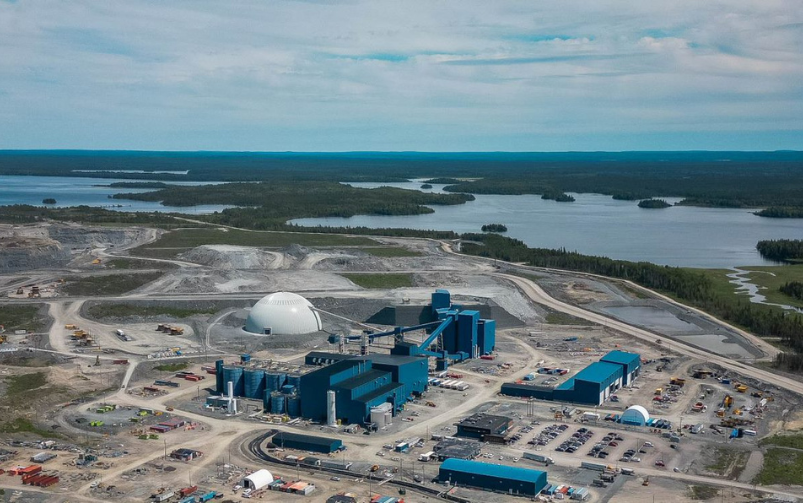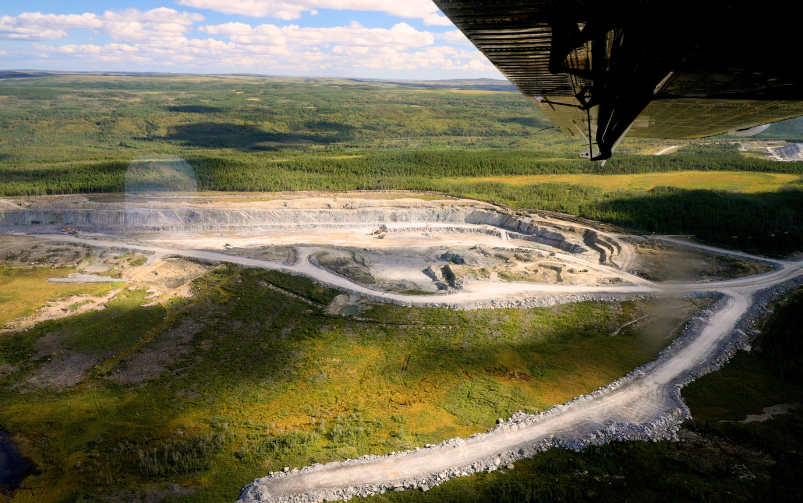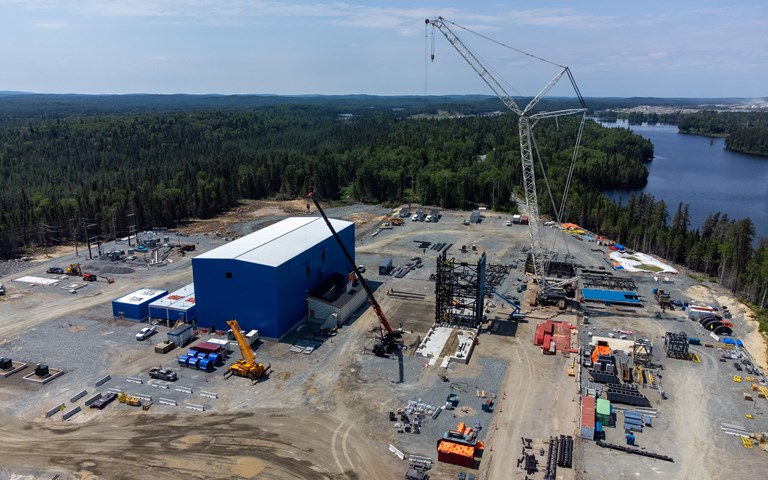Alamos Gold said that integrating its Island Gold mine (pictured) with the adjacent Magino mine would increase its combined gold production to over 600,000 ounces annually. Courtesy of Alamos Gold.
Welcome back to your weekly mining news recap, where we catch you up on some of the news you may have missed. This week’s headlines include the U.S.’s hope of becoming a leading lithium producer being hampered by a confusing array of state regulations concerning the ownership of lithium reserves, the Democratic Republic of Congo placing second in global copper output and a jump in fossil fuel deals.
Alamos Gold is set to purchase Argonaut Gold, including its Magino mine in Ontario that is located adjacent to Alamos Gold’s Island Gold mine, and plans to integrate the two operations. Alamos Gold stated that the merging of these two operations is expected to result in one of Canada’s largest and most cost-effective gold mines and the miner expects US$515 million worth of short-term and long-term synergies from the deal.
Taseko Mines has announced that it will purchase the remaining 12.5 per cent stake in the Gibraltar mine, Canada’s second largest open-pit copper operation located near B.C.’s McLeese Lake, from current holders Dowa Metals & Mining and Furukawa, as reported by Mining.com. Taseko will pay $117 million over a span of 10 years to acquire the shares and become the sole owner of the mine. The company said this purchase will increase its attributable copper production by 14 per cent, as well as boost its cash flow for the ramp up of construction activities at its Florence copper project in Arizona, U.S.
Lynn MacKinnon from Rio Tinto and Shauna Goldberg from Eldorado Gold gave tangible examples of how to mitigate disrespectful and harmful behaviour in the workplace in a recent Mining Industry Human Resources Council webinar. The discussion included insights from Rio Tinto's comprehensive 2022 review of its workplace culture and Eldorado Gold's redesigned respectful workplace policy.
Legal ambiguities around the ownership of lithium brine reserves located in several mineral-rich U.S. states are obstacles to that country's ambitions to become a key global producer of lithium, as reported by Reuters. Analysts are concerned that the uncertainty regarding ownership of these reserves may pose significant challenges for Washington’s goals to keep up with the energy transition and reduce China’s control over the critical minerals market.
Recent data revealed that Peru’s spot as the world’s second largest copper producer was snagged by the Democratic Republic of the Congo (DRC) last year, as reported by Reuters. Peru’s copper production for 2023 was 2.76 million short tons, with the DRC producing 2.84 million short tons in the same period. Chile is currently the world’s top producer of copper.
Private credit managers are involved in more fossil fuel deals as compared to several years ago, as banks are reluctant to lend to an industry that carries reputational and regulatory risks, as reported by Bloomberg News. The total amount of private credit for oil and gas which was publicly disclosed was US$9 billion over the last 24 months. For the preceding two years it was US$450 million.
The U.S. Energy Department is granting US$6 billion in federal funding to support 33 industrial projects across 20 states in an effort to reduce carbon emissions, as reported by Reuters. Up to US$500 million of this investment will be used towards the installation of two new electric arc furnaces, along with hydrogen-based technology, at a Cleveland-Cliffs Steel Corp facility in Ohio that will decrease its greenhouse gas emissions by one million short tons. Following the completion of the planned 33 industrial projects, 14 million tonnes of pollution is expected to be cut annually.
A paper published in the journal Science Advances explores how concentrations of metals crucial for renewable energy technologies can be carried from the earth’s mantle via low-temperature melts that are rich in carbon, as reported by Mining.com. High-pressure and high-temperature experiments that mimicked conditions similar to those found around 90 kilometres below the surface revealed that when carbonate melts dissolve, they can transport various metals and compounds derived from the surrounding mantle lithologies to shallower areas in the earth’s crust, potentially forming valuable mineral deposits. This recent discovery suggests that tracking carbonate melts could offer useful insights into future metal exploration efforts.
The metaverse—a 3D-enabled digital environment that makes use of virtual reality, augmented reality and other tools to create an immersive virtual experience—is changing the way that mining workers receive training, as reported by Rosalind Stefanac in the February issue of CIM Magazine. Metaverse-based training platforms have revealed to be 10 times more effective in helping workers retain information and apply what they have learned in real life. In addition, training in a virtual environment protects learners from the hazards found at an active mine site.
A chance discovery made by oil exploration drillers in 1943 put Saskatchewan on the map for potash production, Ailbhe Goodbody wrote in the February issue of CIM Magazine. It was later in 1952 that the first shaft was sunk in the province’s potash deposits, with production officially beginning at Patience Lake in 1958, and continuous potash production starting in 1962 at the Esterhazy mine. However, Saskatchewan’s potash mines had to overcome difficulties with inflows from surrounding water-bearing formations.
That’s all for this week. If you’ve got feedback, you can always reach us at editor@cim.org. If you’ve got something to add, why not join the conversation on our Facebook, Twitter, LinkedIn or Instagram pages? Enjoy the long weekend!




